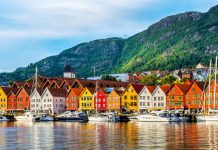Four killed and 15 injured when a truck with 80 km an hour raced through one of the busiest walking street in Stockholm.
In Oslo a young Russian citizen has been arrested, carrying a bomb.
It will hit the Scandinavian tourism as it has hit other European capitals.
The latest ECM-MKG European Destinations Observatory report points out that in European cities, in 2016, the Revenue Per Available Room (RevPAR) experienced a modest growth (+ 0.7%) compared to 2015. With a stable Occupancy Rate (-0.1 point), growth is driven by the Average Daily Rate (ADR) up by 0.9%. These overall results hide great disparities between European destinations, some of them registering serious setbacks, while others grow at a fast pace.
Throughout 2016, many cities on the axis crossing Belgium, France, Switzerland and Italy experienced a decrease in their RevPAR.
The aftermaths of the Brussels lockdown in November 2015 and the attacks of March 2016 have strongly impacted the performances of the Belgium capital, which saw its occupancy drop by 11.7 points and its RevPAR decrease by 17.6%. Antwerp and Ghent are also on a negative trend, with a RevPAR decline of 5.5% and 2.1% respectively.
In France, Paris and Nice, both hit by terrorist attacks, saw their Occupancy Rate and Average Daily Rates decrease considerably, leading to a RevPAR drop of 12.6% in Paris and 8.9% in Nice. Not all French cities reported a decrease: RevPAR went up in Lille (+12.6%), Lyon (+7.1%), Toulouse (+6.8%), Bordeaux (+6.4%), Biarritz-Bayonne (+6.1%), Montpellier (+5%), Marseille (+2.5%), Strasbourg (+2.9%) or Reims (+0.4%).
Most central and Eastern European destinations also posted growth.
In Germany, RevPAR grew by 5% on average, with Düsseldorf, Nuremberg or Leipzig recording an increase by 17.8%, 15.6% and 8.8% respectively. In contrast, Cologne, Dresden or Frankfurt are on a down trend. Budapest, finished off the year on a 10.3% increase in RevPAR and outperformed Warsaw (+9%), Prague (+7.5%) and Vienna (+2.2%).


























